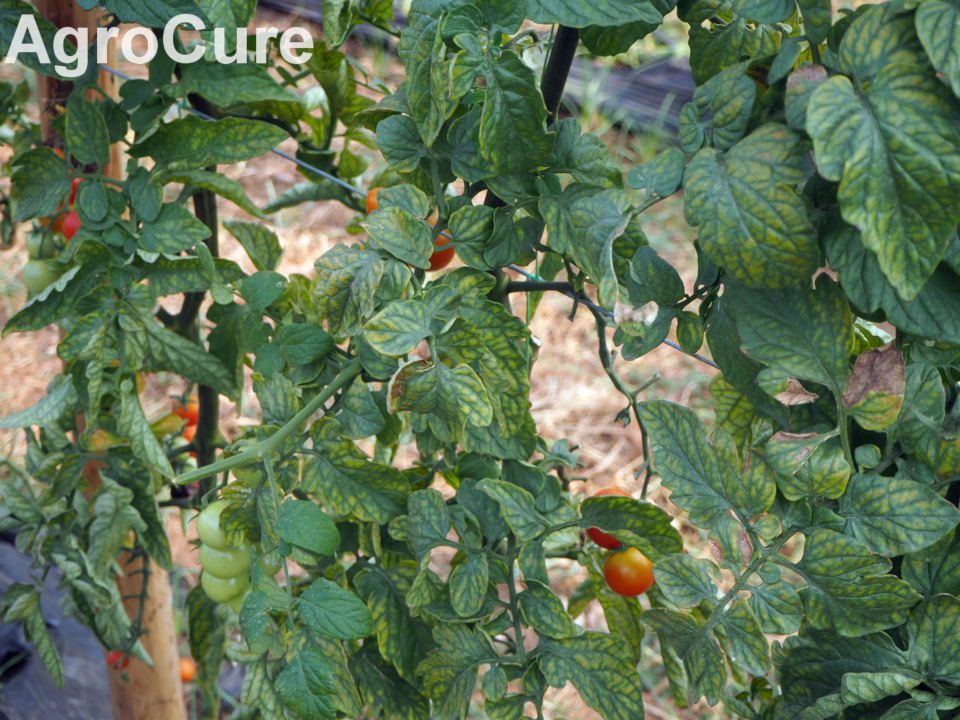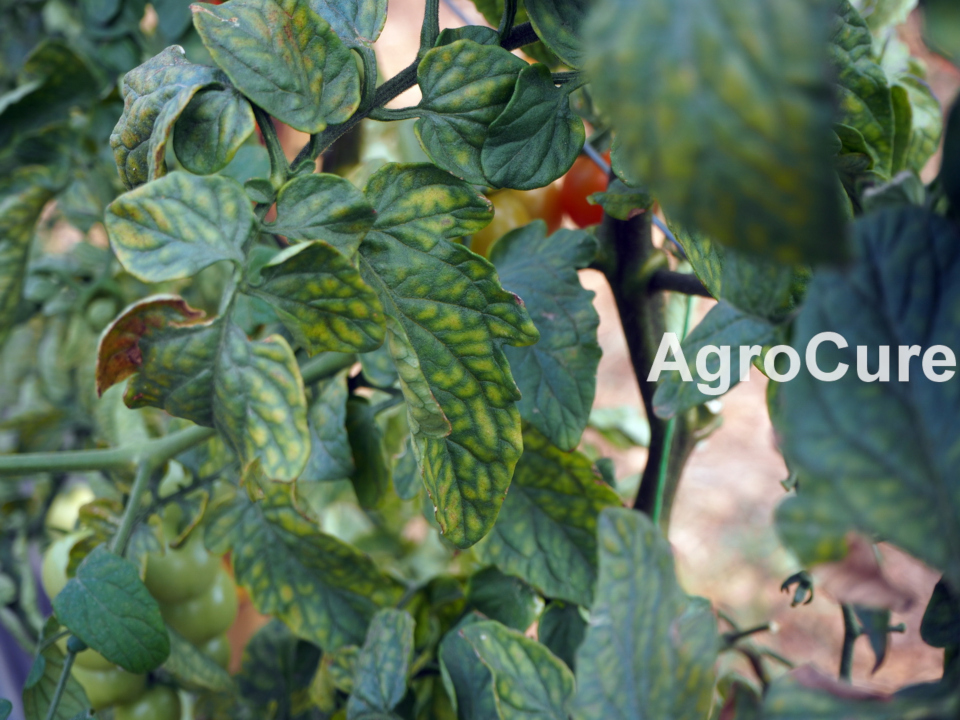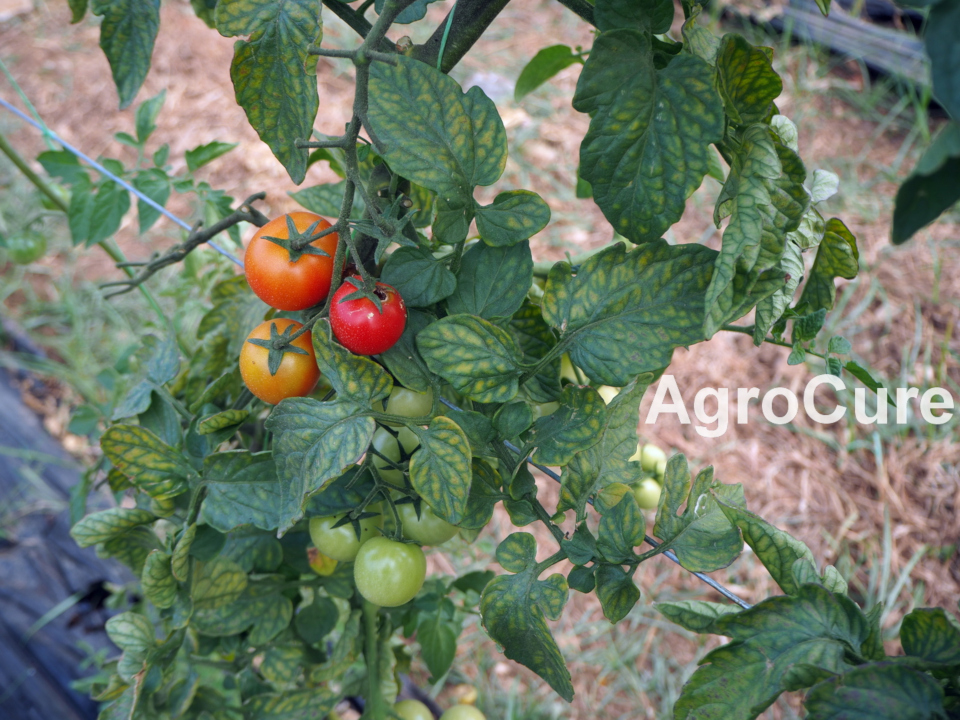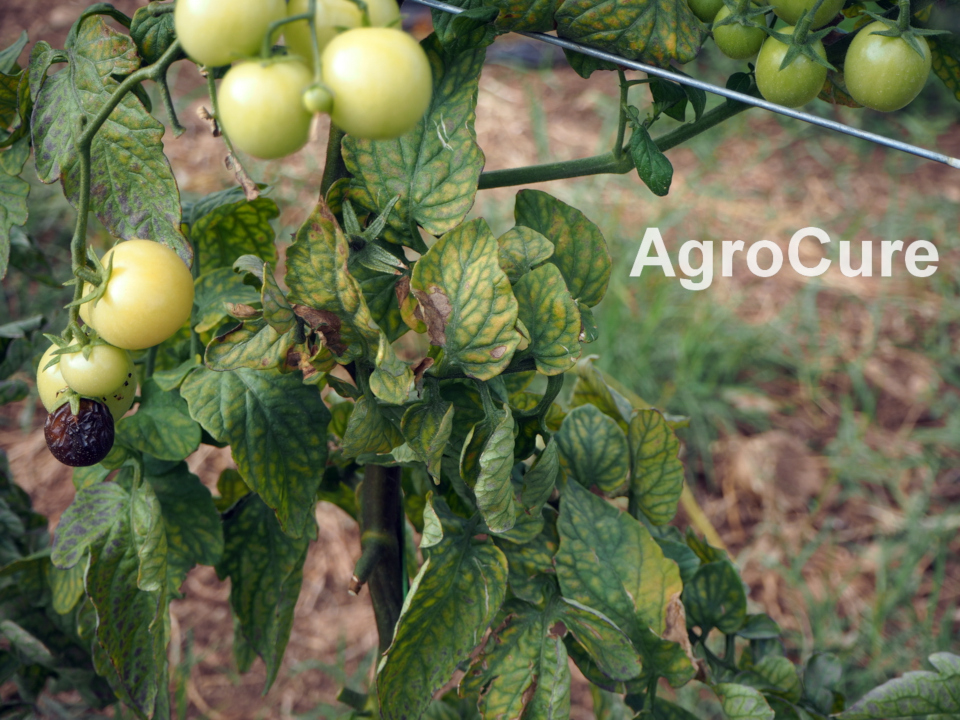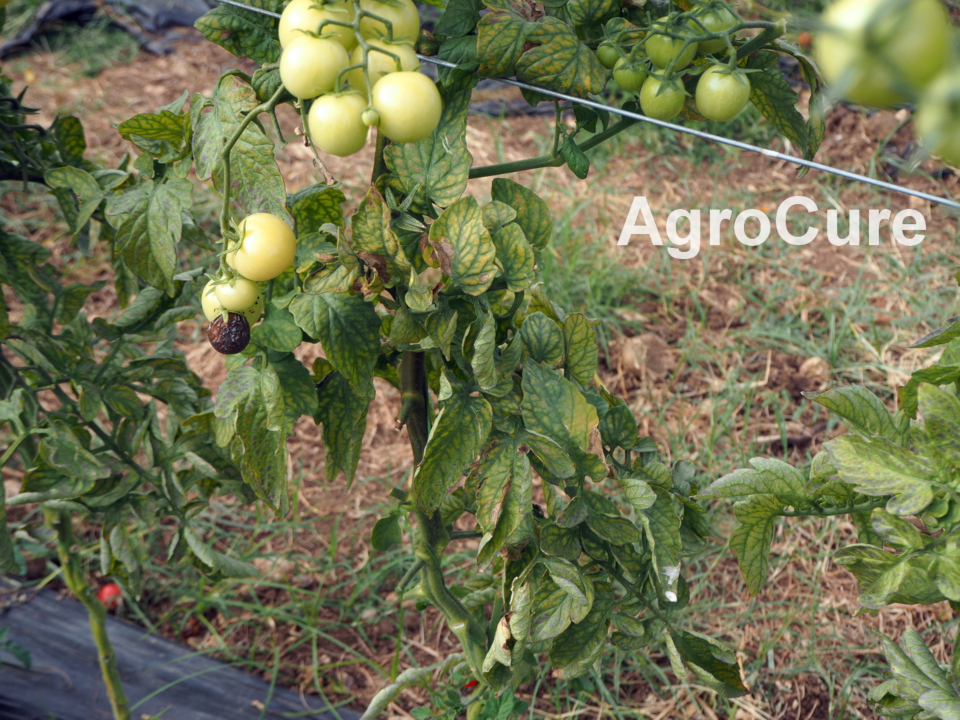Magnesium deficiency on tomato
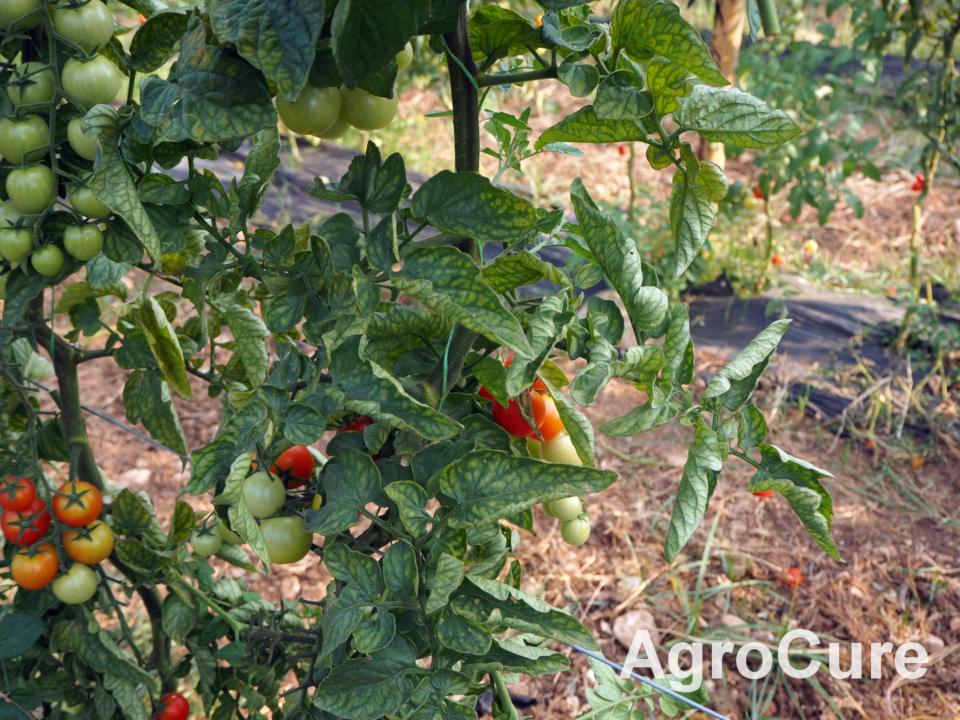
A typical case of magnesium deficiency in tomato plants, in a field in the region of Kavala, N. Greece. Interveinal chlorosis on old/mature leaves at the base of the plant is evident. Application of a foliar magnesium fertilizer was recommended to correct the condition quickly and avoid severe impact on the quality and quantity of production.
Usually magnesium deficiency occurs in soils with a low content of magnesium and in light and acidic soils in which magnesium is easily leached. In soils with a pH from 4.5-5.0, any addition of magnesium to the soil leads to excessive and rapid leaching of the element. In these cases, use of dolomite is recommended for the simultaneous rise of pH and administration of magnesium. Application of magnesium sulfate or magnesium oxide to the soil can also correct the shortage of magnesium when pH is elevated.
Shortage of magnesium can also occur in soils with high salinity and where large quantities of manure or fertilizers rich in potassium have been used. Finally, it can occur in soils with nutrient imbalance caused by excessive administration of potassium or calcium.
Author/photos: Aris Chloridis
